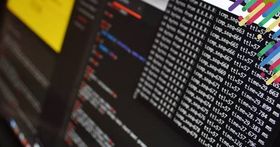How to Defend Against the OWASP Top 10 Vulnerabilities & Mitigate Risk
Dive into the OWASP Top 10 vulnerabilities and learn how to protect your web applications from the most common threats. We'll learn about the best practices for risk mitigation, secure development, and compliance to keep your systems safe.
Published April 5, 2025.

The OWASP Top 10 is a globally recognized standard for identifying and addressing the most critical security risks to web applications. Published by the Open Web Application Security Project (OWASP), it serves as a foundational guide for developers, security professionals, and organizations to mitigate vulnerabilities and protect against cyber threats. Its significance lies in its ability to provide a prioritized, actionable framework that reflects the evolving landscape of application security.
OWASP continuously updates its guidelines to address emerging risks. According to the Verizon DBIR 2024, 80% of web application breaches were linked to vulnerabilities listed in the OWASP Top 10, highlighting its ongoing relevance in combating real-world threats.
» Don’t let OWASP vulnerabilities compromise your systems—Contact us to secure your systems
The OWASP Top 10: Overview and Evolution
The OWASP Top 10 has evolved beyond traditional coding flaws like injection vulnerabilities and cross-site scripting (XSS) to address broader security challenges.
Recent updates emphasize the importance of secure software design, highlighting risks such as insecure design patterns and software supply chain attacks. This shift reinforces the need for organizations to integrate security throughout development rather than relying solely on post-deployment fixes.
With the rise of APIs and cloud-based applications, attack surfaces have grown significantly. Automated attack techniques further increase risks, making OWASP’s guidance essential for maintaining secure, resilient applications.
» Heard of OWASP ZAP? Here's how to integrate ZAP with other security tools
Summary of the OWASP Top 10 Security Risks
- Broken access control: Insufficient permission enforcement leads to unauthorized access.
- Cryptographic failures: Weak encryption exposes sensitive data to attackers.
- Injection (SQL, NoSQL, OS Command, etc.): Malicious inputs exploit system vulnerabilities.
- Insecure design: Lack of security planning results in unfixable flaws.
- Security misconfiguration: Misconfigured settings expose systems to exploitation.
- Vulnerable and outdated components: Using unpatched software increases attack risks.
- Identification and authentication failures: Weak login controls enable account takeovers.
- Software and data integrity failures: Attackers alter software updates to spread malware.
- Security logging and monitoring failures: Missing logs delay breach detection.
- Server-side request forgery (SSRF): Manipulated server requests provide unauthorized access to internal resources.
How to Defend Against the OWASP Top 10 Security Risks
1. Broken Access Control
Weak or missing access control mechanisms allow unauthorized users to access restricted data or functionalities. Attackers exploit insecure permissions to escalate privileges, modify records, or access confidential information.
Defense strategies:
- Implement role-based access control (RBAC) and least privilege principles
- Regularly test and audit access control policies
- Use secure coding practices to enforce strict authorization checks
- Monitor and log access control failures for quick detection
2. Cryptographic Failures
Improper encryption exposes sensitive data, making it vulnerable to interception or manipulation. Weak cryptographic algorithms or insecure key management practices can lead to data leaks and breaches.
Defense strategies:
- Use strong encryption algorithms (e.g., AES-256)
- Securely manage and rotate encryption keys
- Enforce HTTPS with TLS 1.2+ to protect data in transit
- Avoid deprecated cipher suites that weaken encryption security
» Understand how asymmetric and symmetric encryption protect sensitive data
3. Injection (SQL, NoSQL, OS Command, LDAP, etc.)
Injection attacks occur when unsanitized user inputs allow malicious commands to execute within applications. This can lead to unauthorized access, data leaks, or system compromise.
Defense strategies:
- Use prepared statements and parameterized queries for database access
- Sanitize and validate all user inputs
- Deploy web application firewalls (WAFs) to block injection attempts
- Utilize ORM frameworks to handle queries securely
4. Insecure Design
Poorly planned system architecture introduces security flaws that cannot be patched easily. Without security considerations in the design phase, applications become vulnerable to long-term exploits.
Defense strategies:
- Perform threat modeling early in the development process
- Follow secure design principles to minimize risks
- Conduct regular security architecture reviews
- Implement a secure development lifecycle (SDLC) to enforce security at every stage
» Learn more: Streamlining Agile SDLC workflows
5. Security Misconfiguration
Default settings, overly permissive configurations, and exposed services leave systems vulnerable to attacks. Attackers can exploit misconfigured servers, APIs, or security settings to gain unauthorized access.
Defense strategies:
- Regularly audit and apply security best practices across environments
- Disable unused features to minimize attack surfaces
- Use automated configuration management tools to enforce security policies
- Implement strict security policies to prevent accidental misconfigurations
6. Vulnerable and Outdated Components
Running outdated software or using third-party libraries with known vulnerabilities exposes applications to attacks. Exploitable dependencies can lead to system compromise and remote code execution.
Defense strategies:
- Regularly update and patch third-party libraries and frameworks
- Use software composition analysis (SCA) tools to detect vulnerable dependencies
- Remove unused and legacy components to reduce risk exposure
- Monitor security advisories for timely updates
7. Identification and Authentication Failures
Weak authentication mechanisms make it easy for attackers to gain unauthorized access. Poor password policies, session hijacking, and missing multi-factor authentication (MFA) increase security risks.
Defense strategies:
- Enforce multi-factor authentication (MFA) for all users
- Use strong password hashing algorithms (e.g., bcrypt, Argon2)
- Implement secure session management to prevent session hijacking
- Monitor authentication logs to detect unusual login attempts
» Make sure you know how to defend your business against password spraying attacks
8. Software and Data Integrity Failures
Lack of integrity verification in software updates or data transfers allows attackers to inject malicious code or modify data without detection. This is especially critical in supply chain attacks.
Defense strategies:
- Use digital signatures to verify software authenticity
- Implement integrity checks to detect unauthorized modifications
- Restrict external package sources to trusted repositories only
- Control access to update mechanisms to prevent tampering
9. Security Logging and Monitoring Failures
Without proper logging and monitoring, security incidents may go undetected for extended periods. Attackers can remain in a system for months, exfiltrating sensitive data unnoticed.
Defense strategies:
- Enable centralized logging for all security events
- Secure logs against tampering and unauthorized access
- Use security information and event management (SIEM) tools for real-time threat detection
- Conduct security response drills to test monitoring capabilities
10. Server-Side Request Forgery (SSRF)
SSRF attacks occur when an attacker manipulates a server into making unintended requests, often accessing internal resources or sensitive metadata.
Defense strategies:
- Enforce strict whitelists (allowlists) for outbound requests
- Disable unnecessary network access to internal services
- Implement metadata API protections to prevent unauthorized access
- Validate and sanitize user input in server requests
Key takeaway: Broken access control, injection flaws, and security misconfigurations are top OWASP threats, leading to data breaches. RBAC, input sanitization, and automated monitoring help mitigate these risks.
Consequences of Ignoring OWASP Vulnerabilities
Failing to address OWASP vulnerabilities can have far-reaching consequences for organizations, affecting their operations, reputation, and compliance status.
Key consequences include:
- Data breaches: Ignoring vulnerabilities can lead to the exposure of sensitive user data, including personal and financial information. Such breaches not only harm affected users but also result in reputational damage, eroding customer trust and loyalty.
- Operational disruptions: Vulnerabilities can cause significant service downtime or degrade system performance. This can disrupt business operations, lead to financial losses, and hinder customer satisfaction due to unreliable services.
- Regulatory fines: Non-compliance with standards like PCI DSS, HIPAA, and GDPR can result in steep penalties. Beyond the financial cost, organizations may face increased scrutiny from regulatory bodies, affecting their market credibility.
How to Prioritize Remediation Efforts
Consider a Risk-Based Approach
Using frameworks like the Common Vulnerability Scoring System (CVSS), organizations can classify vulnerabilities based on their severity and potential impact. Implementing a CVSS starts with understanding the three main metric groups:
Base Metrics
These represent the intrinsic characteristics of a vulnerability that are constant over time:
- Attack vector (AV): How the vulnerability can be exploited (e.g., network, adjacent network, local, physical).
- Attack complexity (AC): The conditions required to exploit the vulnerability.
- Privileges required (PR): The level of privileges an attacker needs.
- User interaction (UI): Whether user interaction is required.
- Scope (S): Whether the vulnerability affects components beyond its security scope.
- Confidentiality (C): The impact on data confidentiality.
- Integrity (I): The impact on data integrity.
- Availability (A): The impact on system availability.
Temporal Metrics
These represent the characteristics of a vulnerability that change over time:
- Exploit code maturity (E): The current state of exploit code availability.
- Remediation level (RL): The availability of a fix or workaround.
- Report confidence (RC): The degree of confidence in the vulnerability's existence.
Environmental Metrics
These represent the characteristics of a vulnerability that are specific to a user's environment:
- Security requirements (CR, IR, AR): The importance of confidentiality, integrity, and availability in the user's environment.
- Modified vase metrics: Modifications to the base metrics based on environmental factors.
Once the metrics have been defined, calculate the base score using the first column. From there, calculate the temporal score by modifying the base score using the temporal metrics, then modify the temporal score using the environmental metrics.
After you have your metric score, you can allocate thresholds for severity levels (such as high, medium, and low) in order to rank each potential vulnerability and understand which should take priority.
Balance Business and Compliance Objectives
Achieving compliance without disrupting operations requires careful planning. You can balance these objectives through the following:
- Compliance alignment: Focus remediation efforts on vulnerabilities that directly affect frameworks like PCI DSS.
- Operational awareness: Collaborate with teams to minimize disruption to critical business processes during remediation.
» See how compliance frameworks like PCI DSS can benefit your business
Effective Tools for Mitigating OWASP Risks
Detection Tools
Detecting vulnerabilities early is crucial for minimizing security risks in applications. Various testing tools focus on different stages of the development lifecycle, ensuring comprehensive protection. While some tools analyze code before deployment, others detect threats in real-time, providing a multi-layered defense against vulnerabilities. These tools include:
- SAST (static application security testing): Analyzes source code to identify potential security vulnerabilities before the application is run.
- DAST (dynamic application security testing): Evaluates a running application by simulating attacks to discover vulnerabilities that can be exploited in a live environment.
Each of these tools plays a distinct role in identifying and mitigating security risks, making them essential components of a robust application security strategy.
» Discover ways to simplify vulnerability management in the cloud
Mitigation Tools
Once vulnerabilities are detected, effective mitigation tools help reduce risks and prevent exploitation. These tools work by blocking malicious activity, securing application dependencies, and enforcing security controls.
- Web application firewalls (WAFs): Filter and block malicious traffic, protecting web applications from common threats like SQL injection and cross-site scripting (XSS).
- RASP solutions: Provide in-app security by identifying and mitigating attacks during execution without requiring external rules or signatures.
- Dependency-check tools: Tools such as Snyk or OWASP Dependency-Check analyze third-party libraries and frameworks to detect known vulnerabilities in open-source components.
Integration Into CI/CD Pipelines
Continuous integration of security tools ensures vulnerabilities are caught early and often. With SAST, DAST, and dependency-check tools in the CI/CD process, teams can automate security testing without disrupting workflows. Centralized dashboards enable streamlined reporting and provide visibility into the remediation process, ensuring nothing falls through the cracks.
» Learn how real-world attack simulations enhance security
Industry-Specific Strategies for Mitigating OWASP Risks
Highly regulated industries like finance, healthcare, and e-commerce face strict security and compliance requirements, demanding tailored strategies to mitigate OWASP's Top 10 vulnerabilities.
- Finance organizations must protect transactions and customer data while complying with PCI DSS and SOC 2. Secure coding and regular audits help prevent breaches and maintain compliance.
- In healthcare, where patient data security is critical, HIPAA mandates encryption and strict access controls. Safeguarding electronic health records (EHRs) requires role-based access management and robust data protection.
- E-commerce businesses must secure payment processing to comply with GDPR and avoid financial penalties. Encryption, tokenization, and Web Application Firewalls (WAFs) help prevent breaches, while regular security assessments ensure vulnerabilities are quickly addressed.
» Compliance is only part of the equation. Learn how to go beyond compliance with penetration testing and training in PCI DSS
Security Approaches Across Industries
| Industry | Key Security Focus | Compliance Requirements | Mitigation Strategies |
|---|---|---|---|
| Finance | Secure financial transactions | PCI DSS, SOC 2 | Secure coding, audits, penetration testing |
| Healthcare | Patient data protection | HIPAA | Encryption, role-based access control |
| E-Commerce | Safe payment processing | GDPR | Tokenization, WAFs, security assessments |
» Worried about compliance? Compare traditional compliance methods and automation platforms
GRSee's Role in Securing Against OWASP Vulnerabilities
At GRSee Consulting, we provide organizations with specialized consulting and cyberservices to mitigate OWASP Top 10 vulnerabilities. Our approach includes tailored risk assessments, threat modeling, and different types of penetration testing to identify and address security risks and vulnerabilities.
Beyond remediation, we integrate secure development practices, continuous testing, and real-time monitoring for long-term protection. Our compliance support ensures businesses meet standards like PCI DSS, ISO 27001, and SOC 2. With managed security services for ongoing vulnerability management, GRSee Consulting helps organizations stay resilient against evolving threats.





